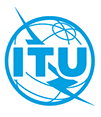ETSI GANA as Multi-Layer Artificial Intelligence (AI) Framework for Implementing AI Models for Autonomic Management & Control (AMC) of Networks and Services; and Intent-Based Networking (IBN) via GANA Knowledge Planes (KPs)
Provides insights on ETSI GANA Knowledge Planes (KPs) Driven Networking in Autonomic/Autonomous Networking (ANs) for Networks that exhibit features such as self-* operations such as self-adaptation, self-optimization, self-monitoring, self-protection and self-defense objectives for the network and services; Establishes relationships between Autonomics, Cognition and Autonomous Network Behaviour; Standardization in this area of ANs.
ETSI 5G PoC White Paper No. 4
https://intwiki.etsi.org/images/ETSI_5G_PoC_White_Paper_No_4_v3.1.pdf





